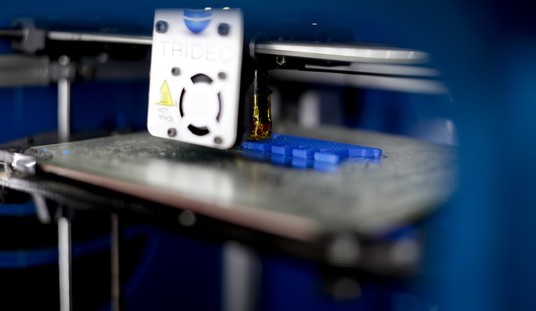Ownership is just the first part of carrying a gun for self defense. The other side of the coin is having a viable method of toting that pistol around. Last week I wrote about two forms of carry: traditional outside-the-waistband and inside-the-waistband. Let’s now take a look at a few other means of carry.Pocket Carry – Carrying a small gun in the pocket is very popular with many people, including myself. Pocket carry tends to be very comfortable, and with the right size pistol, no one will ever know you are carrying.
Pocket carry also gives you a tactical advantage in an unknown situation. You can literally put a hand in your pocket, and achieve a grip on the gun without anyone realizing what you are doing. You can’t very well do the same thing with a gun carried on the hip.
One of the key things to remember is that a holster is still strongly suggested for pocket carry. A holster can keep the gun properly aligned for a rapid draw if needed. As important, the holster can prevent anything from getting into the trigger guard that could prevent a draw, or cause an unintended discharge.
Inexpensive holsters like the DeSantis Nemesis serve well for many years.
Shoulder Holster – Some folks love shoulder holsters while others do not. They’ve certainly been popular in television and motion pictures such as Miami Vice and Bullit. They are not seen as often in use by real-world pistol carriers, though.
While the shoulder holster may be merely a status symbol for some people, they are still a viable method of carrying a defensive firearm. Some shooters find the shoulder carry to be more comfortable than other methods – especially when compared to inside-the-waistband.
One of the keys to comfortable carry, though, is to find a rig that works for you. Depending on the design, a rig may distribute the weight in an uncomfortable manner, or the straps may pull at a part of your body that is annoying.
Shoulder holsters are typically set up for a cross draw. For the same reason an outside-the-waistband holster in a cross draw position works, the shoulder holster may be a good way for drivers to carry a pistol when in a car for a long period of time.
There are several drawbacks to the shoulder holsters. First, you always need a jacket or similar type of concealment garment. An untucked shirt will not work with a shoulder rig.
A second drawback is the price. Many shoulder rigs are priced much higher than other types of holsters. The increased price tag is often the result of the additional leather and craftsmanship that is needed to go into each rig.
There are nylon rigs available, but they are still more expensive than other nylon holsters.
Ankle Holster – Carrying a gun on the ankle presents many problems, but it is still a viable option for toting a small handgun. As a police officer, I always carried a backup gun on an ankle. Off duty, I carried one on the ankle far less often.
Drawing from the ankle is much slower than from the hip. The ankle is just about the farthest place on the body from the gun hand, so no matter how you draw, it will take longer to get it done in most circumstances.
Carrying a handgun on the ankle exposes that pistol to puddles, mud, dirt, dust and all of the other grime that your feet encounter during the day. Regular cleaning of the pistol becomes even more important. This is also one of the reasons I much prefer to carry a revolver in this position than a semi-auto pistol.
Ankle holsters are very good for carrying while driving. For example, if stopped in traffic, it can be much easier to grab a pistol on the ankle than to draw from the hip while seated. Also, by bringing the ankle back to the hand to obtain the weapon can be done is a less obvious way should a potential threat appear.
There are a variety of ankle holsters on the market. For general carry, I’ve had good success with the Galco Ankle Glove. For carrying while wearing boots, I like the inexpensive Uncle Mike’s nylon holsters. They are very secure and can be easily washed when exposed to mud or other dirt.

Belly Band – Belly bands come in several different configurations, but essentially they are a wide band of soft material that wraps around the trunk of the body. In or on the band is a small pocket or pouch for carrying a handgun. A shirt then conceals the band and pistol.
Belly bands work best with small firearms. Larger guns tend to bulge too much, and are more likely to pull the band out of position.
Drawing from a belly band tends to be slower than other forms of carry, but it removes the need for a stiff belt or pockets. People wearing lightweight shorts while exercising, for example, might find this an acceptable compromise.
While not technically a belly band, there are several companies who make undershirts with holster pockets built in. They offer the same general advantages and disadvantages of the belly band.
Waist Carry – In last week’s column, I talked about outside-the-waistband carry in the context of traditional holsters. There are other options for waist carry beyond the normal holster.
Waist packs, or fanny packs, allow the carrying of a full size handgun without the need for covering garments. These can be great options when working out or working in the yard.
A waist pack has the additional benefit of being able to carry additional ammo, a flashlight, a cell phone and other bits of gear you might consider essential.
Another option for waist carry without the need for a concealment garment is a “hip bag” that attaches to the shooter’s belt. One of these kinds of holsters completely encase the pistol in a pouch that looks more like a large cell phone case or a trendy bag.
Off Body Carry – Off body carry is exactly what it sounds like: you keep a gun close to you without it being tethered to your body in some fashion. These kinds of carry can be very comfortable, since you do not have a gun rubbing against, or pulling down on your body. However, they tend to be the least secure methods.
One style of off-body carry is the purse holster. Carrying a gun in a purse is an old concept. There are a variety of modern leather workers who make very stylish handbags that have special compartments for carrying a pistol.
Another form of off-body carry is the use of a personal organizer designed with a holster built in. Day planners are carried far less frequently today because of smart phones and tablet computers. Yet, a businessman would not look out of place carrying one around.
The key to off body carry is ensuring the security of that firearm. Many women have purses stolen from shopping carts and office workers of all genders have items stolen from their offices. When taking a pistol into public you have to make sure that criminals do not have access to it.
Crotch Carry – There are at least two companies making non-traditional holsters for hiding a piece in your crotch: the SmartCarry and ThunderWear.
Both companies use a similar design with a pouch that hangs off a belt. The belt goes around the hips and the pouch hangs down the centerline of the body, below the belly. Both the belt and the pouch are completely concealed by the pants of the carrier.
Accessing the gun is slower than appendix carry, but these rigs offer complete concealment of the handgun. Both companies offer models that can carry extra ammo or other items in addition to the handgun.
What experience do you have with these methods? Are there other carry forms you use that I missed? Sound off in the comments and share your experiences!








Join the conversation as a VIP Member